Ha! Hi world! I feel like it’s been so long since I (Whitney) have posted! For the past three weeks or so I have been working at a local, private primary school here, mostly teaching six-grade math, and I have absolutely loved the experience! Since it has been so long since I’ve written, and because I’ve never yet written about my typical day here, I figured it is time I do so! I’ve provided lots of detail so you can hopefully get a good picture in your head and put yourself “in my shoes.”
Every morning I wake up at 6:32AM and once awake, there’s no going back to sleep because the excited and insistent chatter of the birds is too loud at this time in the morning to allow for such indulgences. Don’t get me wrong, the birds sound beautiful actually, their songs are just not always welcome when I am really tired and only want to sleep more. Throwing back the mosquito net behind our bed’s headboard, I greet Scott, who is usually just getting on the computer with breakfast in hand, clicking through ESPN’s website, the Hawkeye fan website, and responding to any new email fellowship interview invitations. I plod over to the bathroom, wash my face with tap water, brush my teeth with triple-filtered water, and choke down my dreaded doxycycline pill for malaria on either the first or second try. I then hurry to get dressed and get some food into my stomach before the doxycycline has a chance to make me nauseous.
With food in hand, I impatiently throw open the curtains covering our four big windows eager for the sunlight to light our dim studio apartment. Unfortunately for Scott, this usually means he has to be extra careful when he comes out of the shower in order not to expose himself to the people passing by on the dirt road below. Settling down at our desk, I do my devotions and check my email.
At 7:45 AM I pack my bag with a notebook, a red pen I bought for marking student’s papers, an umbrella in anticipation of afternoon rains, and my wallet with a couple hundred shillings (1 dollar = ~82 shillings) to buy some produce in the afternoon from my favorite duka vendors.
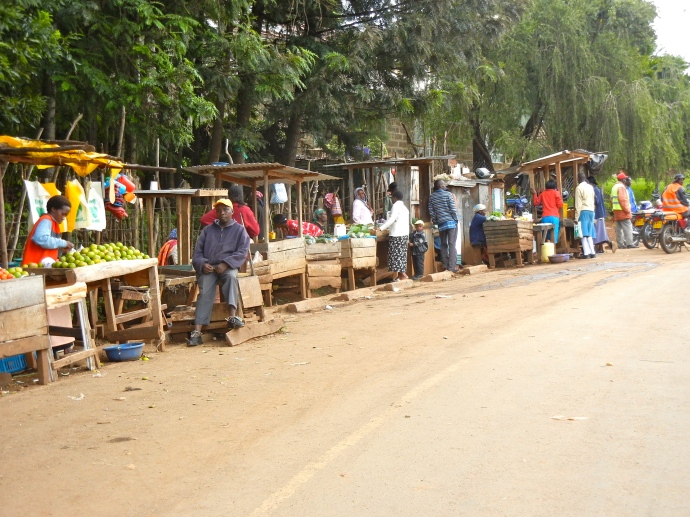
Produce dukas lining the road in front of the hospital entrance. Boda bodas can be seen on the far right.
As I walk up the road past the hospital, various boda boda (motorbike taxis) and taxi drivers call out to me asking me where I’m going and if I need a ride to the town of Bomet. I shake my head, smile and thank them as I continue my quick pace past the crouched mamas lighting their jikos, which are small clay pots for lighting charcoal and grilling/cooking food (often ears of corn). Reaching the gate of the school, I take a moment to take in the view of the valley below the school and the hills beyond. Praise God!
I carefully make my way down the muddy path to the school, wave a greeting to the kitchen staff as I pass buy the “cafeteria,” say “hi” to the curious children poking their heads out of their classrooms observing everything about me on that particular day, and continue down to the staff room.

The school “cafeteria” and kitchen. One of the cooks is under the awning to the right. They usually prep and chop the vegetables there.
When I enter the staff room, I make the rounds and shake the hand of everyone present there greeting them in English, Kiswahili, or Kipsigis. To not shake the hand of everyone present would be rude. Some teachers ask me “Amu ne gaa?” (I’m just writing that how it sounds, not sure about the spelling!) to see if I remember the Kipsigis they taught me the week before. “Mising” I reply, knowing they have asked how my home is. If I hear “Amu ne” followed by “boiyot” I know they are asking how my husband is. Luckily for me, the correct response to any of these inquiries is always “Mising” which is the equivalent of “good” or “well”! Upon hearing this correct response, or any bit of Kipsigis or Swahili that they have taught me, their faces break into huge smiles and they say, “Look at her! Look at her! She knows Kipsigis!” Which, really, is a gross overstatement as I only know a few phrases, but it makes me happy to see them so proud.

The empty staff room. I sit at the end of the second table on the left where you can see my grey Iowa Tennis water bottle.
After greeting all the teachers, I sit down next to Madam Sarah, the Standard Two teacher (second grade). If I forget to take a coffee cup before sitting down, one of the teachers is up, out of his or her chair, bringing me a cup and pouring me a hot, sweet cup of chai from a thermos. It is a must to drink chai. I settle in, wrapping my hands around the warm cup of chai and listen to the general Kipsigis babble until I ear a word of English, or a conversation becomes so funny or a topic so hotly debated that they stop and explain to me what they were talking about so I can either join in on the laughter or give my opinion on the debated matter.
At 8:10AM the bell rings, I ask five different teachers for a piece of chalk, we finally find one, and I’m off to teach Standard Six maths (they put an “s” on the end of “math” here when they spell it and they pronounce it too when they say “maths.”) When I walk into the class there is still a general exclamation of excitement when they see that it is I, the visitor, who is going to teach them that day, even though I have been teaching them for 3-4 weeks now. This excitement is soon hushed, as they remember they are supposed stand up and be quiet until greeted when a teacher enters the room. “Good morning class!” I say, and in unison they respond “Good morning Mrs. Whitney.” “How are you?” I ask. “We are fine, thank you and how are you today?” they all respond in rhythm. I answer thoughtfully with a reason and look around the room to gauge their reaction to my non-mechanical response. I start to explain what we are going to do that day in class and invariably, I find myself wondering why they are still standing, and it is only then that I remember that I must ask them to sit before they will take their seats. I ask them to sit, “Thank you Teacher” they all respond to the sound of wooden chairs scraping the cement floor as they sit down.
Setting a folder on my “desk,” I look down to unclasp it and take out copies of the test they took the week before. Within seconds brown hands, palm-up, are laid across my desk belonging to eager students who want to help pass out the tests for me. I split the pile in half and chose two students to pass them out. Once everyone has a test, I ask if anyone would like to review a problem in questions one through five, questions five through ten, and so on. Usually my most vocal students in class (about six students) will shout out a number and in between their requests I’ll hear a small, staccato request to do another number. When I look in that student’s direction to confirm his or her request, they almost always bashfully turn away and look down at their desk pretending that they never made such a “ridiculous” request. “Hold on, hold on!” I say as I raise my hands to quiet the other students petitioning for question number nine. “I heard a ‘seven’ so let’s do that one first.” Question seven is comparatively easy and it will not take long to explain. Besides, if that student was brave enough to ask, I reason I should reward their bravery by working through their requested problem number. I write the equation on the chalkboard asking the students prompting questions as I solve the problem at times pausing to ask “Can I do this?” when I see a potential place that the student might go awry and make a mistake while solving the problem. Sometimes these questions stump them and other times I hear a resounding “No” or “Yes.”
For harder problems, like this number nine, I take time before solving the problem to explain the logic behind why one should go about solving the problem a certain way. When I ask the students for my first step of what I should do, my smartest, most vocal ones may raise their hands high in the air, sure of their answer, and when called on, will stand up before speaking and then give me the correct answer. When I ask the follow-up question of “Why did you decide to do that?” there is usually a pause where the students exchange glances with each other and I repeat, “Can anyone tell me why you do this? Why would you set up to solve the problem in this way?” Eventually, a hand will timidly rise up only halfway and when I call on them with an encouraging smile, they stand up, lean over their desk towards me, and whisper their answer to me. Often I don’t understand what they are saying on the first try because their whisper is too soft and their African-English accent too thick. I walk to within a few feet of their desk and ask them to repeat themselves. When they finish telling me their answer, and I pause evaluating whether or not their answer makes sense and if I can build off of it, their eyes fill with hope and the question “So, am I right?” flashes across their expression. Now, I am not necessarily one to always coo over children or melt at their “puppy-dog” expressions, but this questioning expression, with their big, hopeful eyes, is so beautiful and precious I just want to bottle it up and take it home with me!
Once the problem is set up with the correct numbers in place, we move our way through simplifying fractions, performing multiplication and long division. The classroom comes alive while we work through this and is abuzz with instructions and steps for me on what to do next and what number to write where as the children race to tell me the next step. As the class ends, the children thank me and ask me to come again.
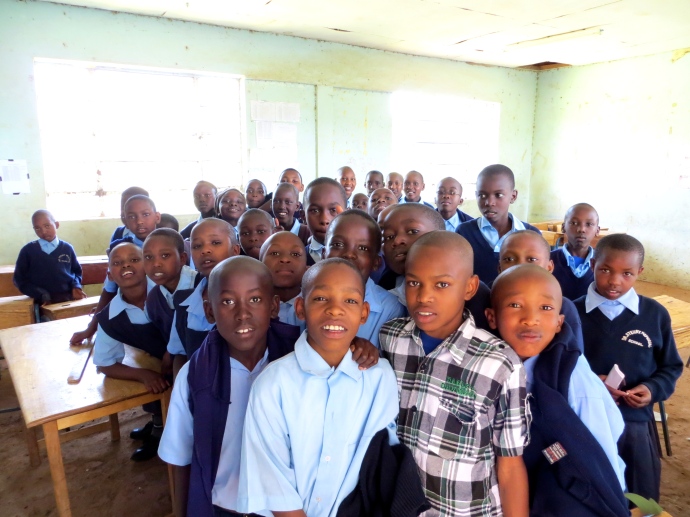
My six grade class this past Wednesday, the day of their Closing Ceremonies (the last day of their second term). The boy in black and white plaid is not in my class, he is the older brother of the boy, Brian, standing next to him, who tied for first place in the class standings along with the other Brian in my class.

I told my students to do a “funny picture” and this is what they did! Can you pick out the boys and girls in either of these pictures? It is a school rule that the girls must keep their hair very short and cannot wear any type of jewelry.
Back in the staff room I mark tests and homework for other teachers and chat with them. At 10:40AM to 11:30AM is morning break and the teachers are served chai again while the students are served “porridge” (which is like a super-sweet, runny, Malt-O-Meal that you drink from a cup). Before taking chai, one of the teachers prays and blesses the chai. At lunch time, 1:00PM, teachers will take turns voluntarily serving each other and someone will always pray before lunch too. I love that they always stop to pray and thank God for what he has provided them. They do not take it for granted.
Lunch is brought into the teacher’s staff room by kitchen staff in two big, insulated, crockpot-looking containers with either ugali (a solid mass of cooked cornmeal) or rice in the biggest container, and in the other container will be a salty broth with either cabbage, cabbage and beans, beans and carrots, or kale with a few small bits of beef and tomato. Metal plates, spoons, and glasses are brought to the staff room in a yellow, plastic, five-gallon bucket. Water is poured from a giant, metal teapot.
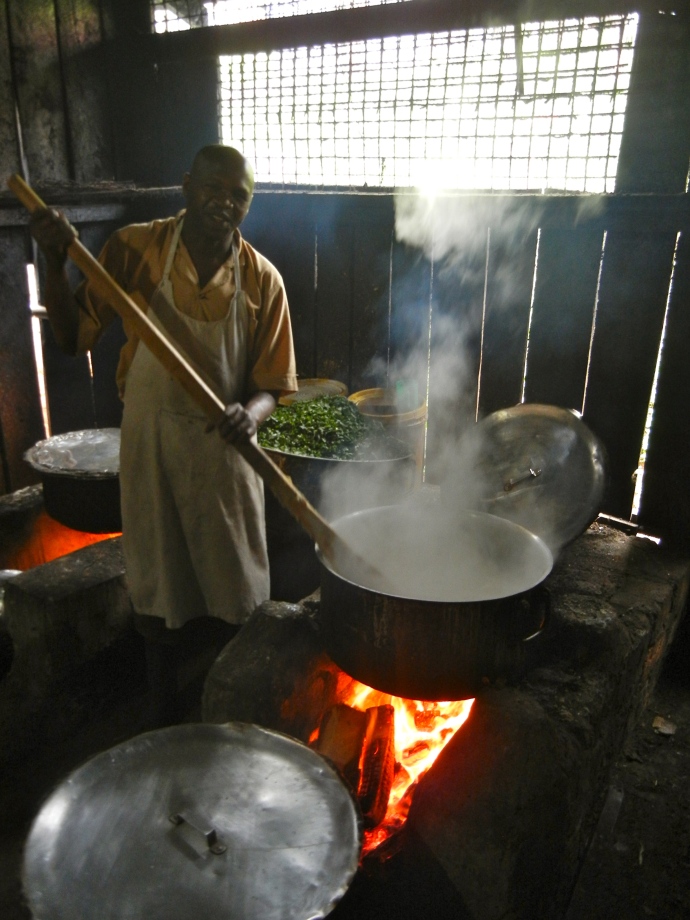
One of the school’s cooks in the kitchen part of the cafeteria stirring a giant pot of ugali with and equally giant stick. Behind him you can see the kale (sukuma wiki) piled up and ready to be cooked.
After serving myself lunch (I often do this now because if I don’t I’m usually served a massive slice of ugali that is impossible for any non-Kenyan to finish), I settle into my chair next to Madam Sarah ready for stimulating conversation. Often the conversation at lunchtime results in some sort of debate over a cultural, political, or biblical issue. These debates are all in fun and always result in a lot of laughter. The Deputy Head Teacher, (and my favorite teacher) Mr. Koech, is usually behind them as he is wise, but also loves to joke, laugh, and spur people on just to get a rise out of them and start a debate with them. Mr. Koech will battle and battle for his opinion and stance he has taken on the issue and will eventually appeal to me and cry, “Wheetney! Cahn you believe dem?! Leesten, Leeeeesten what dey are say-ing-to-me!” with the last four syllables of the sentence punctuated with rhythmic staccato. He will then tell me his side of the debate, always with interjections and protests from the other side, and I will be left to give my opinion like I am somebody wise whose opinion is highly sought. Personally, I love it, but I do have to be careful not grow proud and think that I am actually wise! Mostly, they are just interested to hear a Westerner’s opinion about bridal prices, women serving men in certain instances, whether a church should pay for a potential pastor’s education, why Kenya doesn’t have sprinters like Jamaica or the USA, what is the best way to cure a cold (they use a lot of herbal medicine here), how many kids a family should have (in general they think one should have a lot more kids than we do on average in the US!), what factors should determine the goal number of children, whether to hold to the tradition that husbands should not be present at birth and should not see their wives and their new child until two weeks after the birth because traditionally that is a thing for the “women” (the mother-in-law, the mother, the sisters, etc.), how to determine how much one should tithe to the church, and, most recently, whose fault it is that the standardized tests the district’s students took had so many errors and questions without correct answers and who is responsible to fix it. I absolutely soak up these conversations as I often end up learning much about the culture and current state of things in Kenya that I would not otherwise understand.
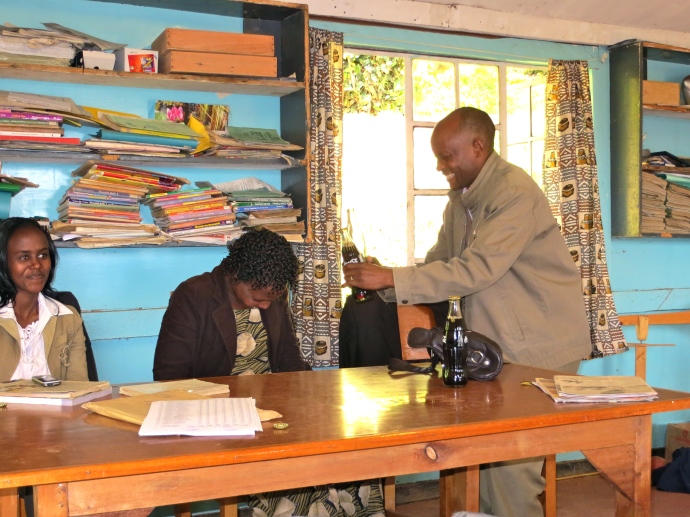
Mr. Koech, up to his usual antics, teasing Miss. Janeth Bii because she wouldn’t do “cheers” with him with her coke bottle and celebrate with him on the last day of the term. So, Mr. Koech took her bottle and did “cheers” with himself over and over again to show Madam Janeth “how it was done.” Madam Janeth is looking down, laughing and just slightly embarrassed.
In the afternoon, I am scheduled to teach PE, Creative Arts, and Social Studies for a teacher who is away for a few weeks. Before the students took their district tests, PE and Creative Arts were replaced with Maths since these two subjects are not tested on the standardized tests. Now, since their tests are done, I have been able to take my grade six students outside for PE. When I announced on the first day after tests that we would go outside for PE the classroom erupted in cheers, followed by “Please, will you get the long rope for us? “No!”, they say, “Will you get the ball for us? The ball! The ball!” In the last week I have attempted (to the great delight of the kids) to play in their jump-rope games to which they sing funny, rhyming songs to while they jump, and cheer for the goals and break-up the skirmishes during their competitive football (soccer) games. I have also been impressed at what the girls are able to do even thought they wear such long, athletic-movement-inhibiting dresses for their school uniforms.
For Creative Arts, I attempted to teach them how to indicate shadows by shading on a drawing, but I think maybe that was a little advanced for them. Finally, for Social Studies, after reviewing their district test and I realized that the only question that I 100% knew the answer to was “Which cultural practice should we NOT protect and continue?” (The answer was “A. Female circumcision.”) Furthermore, since I had no idea what the best growing conditions for sisal were, I did not know what country Ol Donyo is located, nor did I know which African trading leagues Kenya is a part of, I decided to “expand” their social studies beyond Africa, namely to the United States, by letting the students ask me questions about US history, culture, government, and geography. By the end of the class I had a map of the US drawn on the board labeled with every major mountain range and river (they loved the spelling of “Mississippi”) labeled on the map along with where certain cash crops grew and, of course, the state of South Dakota was drawn in when I was asked about snow. George Washington was expounded upon, the national anthem sung to the background sound of little giggles (I sung it as best as I could anyway! They returned the favor and all proudly stood up and sang me the Kenyan national anthem in English and then in Kiswahili—I loved this), and then I finished my social studies presentation by shocking them all by declaring that myself, nor any of my friends in my 2000-student high school owned any cows. They responded by telling me, each and everyone, how many cows their family owns.
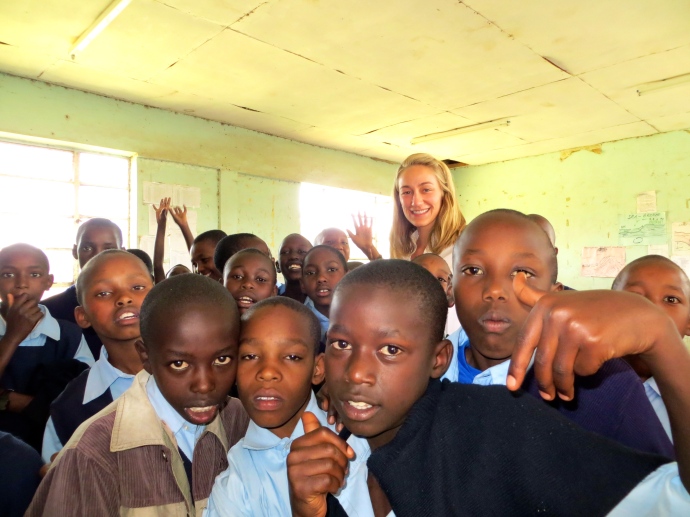
Me with my students. I gave one of my students, Ezra, our brand new, one-day-old camera (yeah, the camera we brought to Kenya is officially kaput) to take this picture and told him to be very careful. He had about five guys all huddled around him as they tried to help him compose the picture and then successfully take the picture by pushing the button at the top halfway to focus and then all the way down to take the picture. I’d say they did a pretty good job for their first time taking a picture!
At the end of the day, I have one last cup of chai with the teachers before heading home around 4:40PM. I am tired from the day and as I walk home, I usually find myself daydreaming about what cookie or cake I will indulge in when I get home before starting supper. “Ah, cilantro, I need to buy cilantro if I’m going to make a version of Vietnamese Banh Mi in order to get rid or our plethora of carrots,” I think to myself when James calls out to me from his duka. I walk up to him and greet him with a handshake. He hands me a two-liter orange Fanta bottle filled with fresh cow milk (milked just this morning) and Scott’s dress shoe that I gave him to take to be repaired. I pay him 120 shillings in exchange, 80 (about $1) for the milk and 40 for the shoe repair, which looks great. He and I joke and small chat for a while and when I turn to leave he instructs me to greet Scott and pass his well wishes onto him.
I continue down the road, wave hi to Betty and her 9-month old son, Victor, telling her I wore the skirt she made for me just the day before and told everyone who complimented me that she had made it.
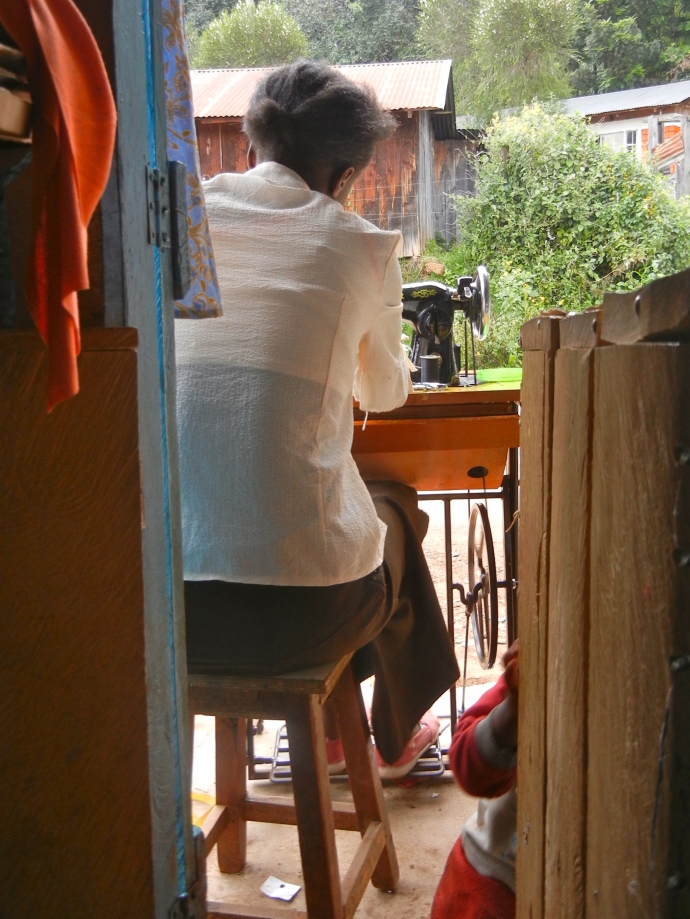
Betty, sewing my skirt with an old-fashioned, self-powered (with a rocking foot pedal) sewing machine.
Further down I wave to Viola who owns a duka that sells ready-made clothes, then I pass by Nick, whom I can always recognize thanks to his missing front tooth, and he calls out a greeting from inside his general store-like duka, so I stop in and chat with him and his young, twenty-something friends about my day and the fact that I’m carrying milk in a Fanta bottle.
Leaving there, I make my last stop, before heading home into the Tenwek Hospital compound, at Mercy’s produce duka.
“Hello my friend,” she says warmly as she greets me with a handshake. I return the greeting and offer one to her two and a half-year-old son Caleb who is strapped onto her back with a kanga. I inform Mercy I’m in need of cilantro. The bunch of cilantro is only ten shillings so she tempts me into buying a pineapple as well for 60 shillings total. She then produces a worn school notebook from underneath her stall and shows me her handwritten recipe for Mandazi (fried doughnut-like things). I’m impressed yet again at her memory, thoughtfulness, and promptness in getting me the things I mention I would like. She has already sourced eggs from grass-fed hens for me, as well as passion fruit when I have not seen it anywhere else. I take her notebook to copy the recipe promising to return it tomorrow. I bid Mercy a good evening and pray to God to protect and provide for Mercy and her son Caleb, thanking him for the amazing person that Mercy is proving to be and for the great faith that she has.
Finally, around 5:30PM I reach home, have a frosted banana cookie while checking my email, and then begin grating carrots.
Some more school pictures:
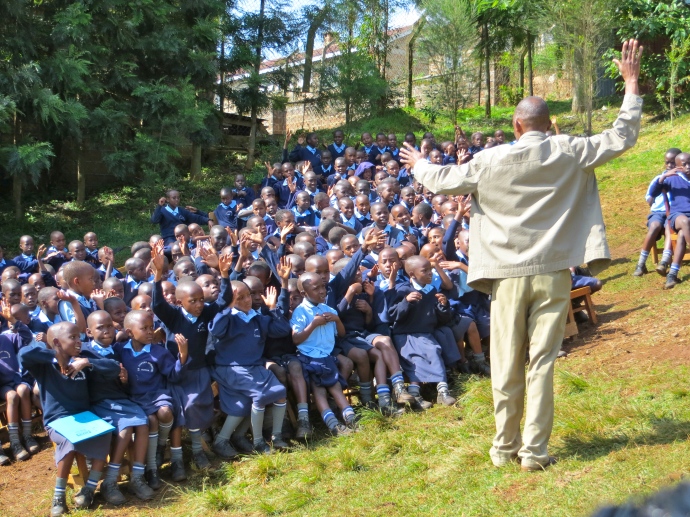
The students congratulating those who were in the top of class six. They said a little phrase with actions that goes like this: “From our hearts, we measure and measure and clap and give to you.” For the actions they touch their hearts (you can see some students doing this) and then they hold their hands wide to “measure and measure” and then they clap their hands together and extend their clasped hands towards those they are honoring.

The teachers at the Closing Ceremonies. From L to R: Mr. Mutai (Science), Mr. Kirui (Math), Mrs. Mosonik (English and Kiswhili), Mr. Ngeno (Social Studies), Mr. Ngetich (Head Teacher), Miss. Bii (Kiswahili and Science), Mrs. Kanduyuwah (3rd grade).
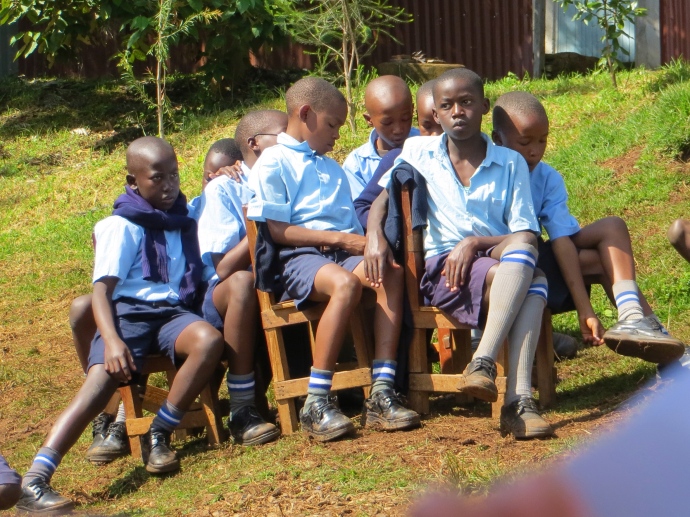
Some of my sixth grade boys during the Closing Ceremonies. I thought they looked like models so I snuck some pictures of them. Note the sweater tied around the neck of the boy on the left, the crossed legs of the two boys toward the right, the socks pulled knee high on the front boy with his top two buttons unbuttoned and his arm slung casually over the back of the chair.

The boys again. This time with three boys with their legs crossed (I think this is so cute) and a handsome frown from the center one.
As always, thanks for reading!
~Whitney
P.S. Since you’ve made it this far I wanted to let you know that Scott and I just got back today after a weekend in the Masai Mara on safari and it was WHOAH. More on that later with pictures galore!

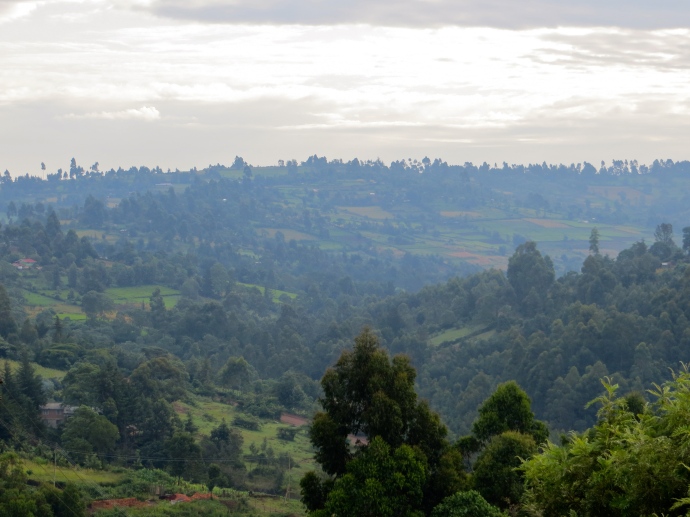
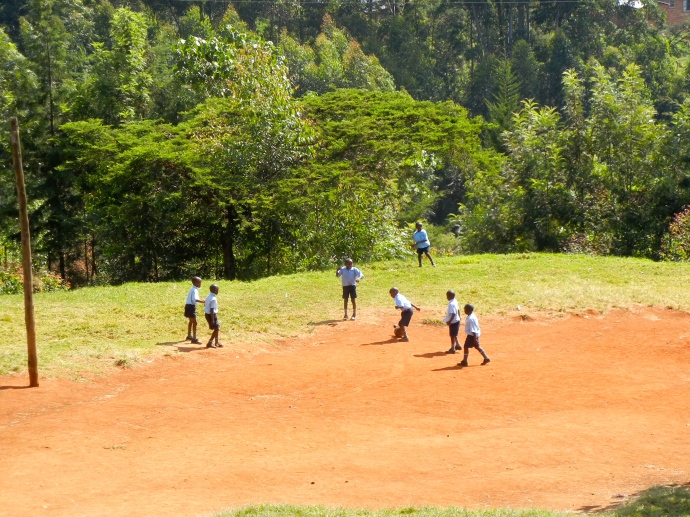

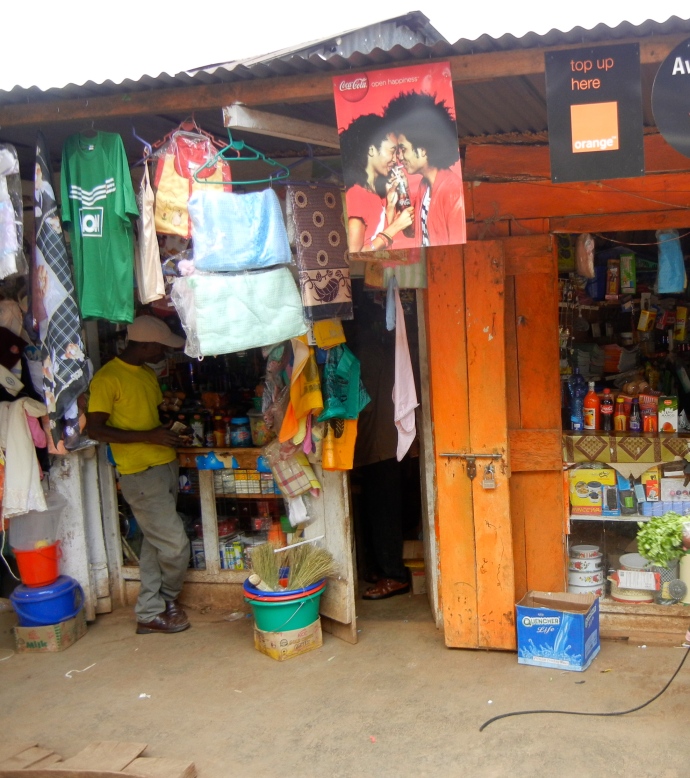

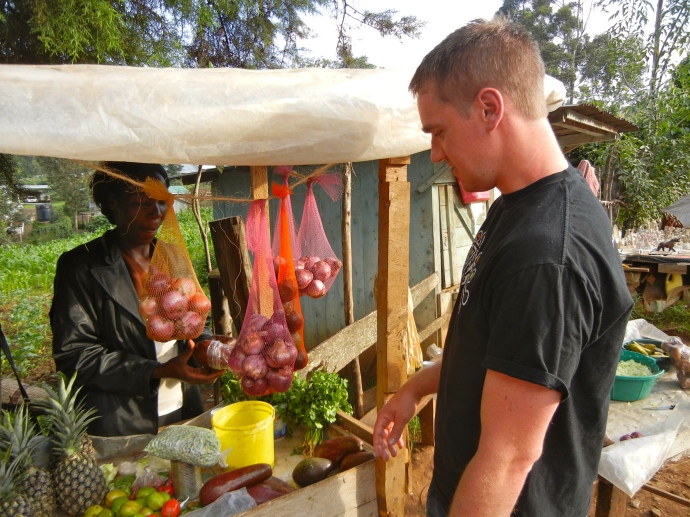
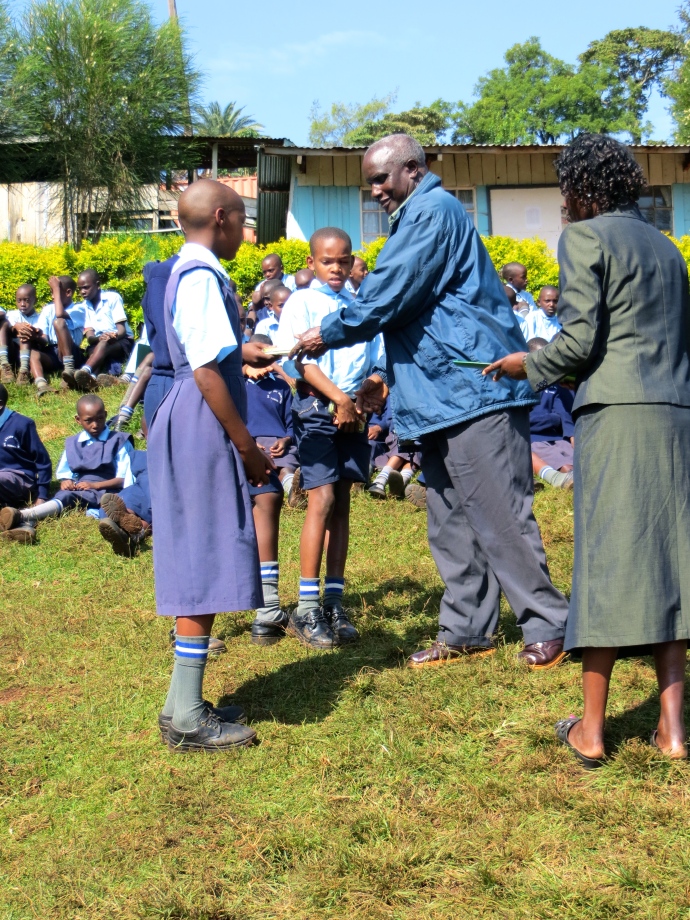
I loved your description of “two big insulated crock pot looking containers” – i guess if you just called them TUFF PUFFS no one would get it!!! Thanks for letting us walk in your shoes for a day. I’m so happy to hear you’re experiencing the magic of Kenya and i can’t wait to hear about the Mara.
Ha! Thank you Steven! You know, I knew those “insulated crock pot looking containers” had a name, and I knew you had told me what they were, and I’ve also heard it here since being in Kenya, but I just could not remember their name while typing this post! Tuff Puffs! Thanks for reminding me! School’s out for the week so I’ll probably spend all day today uploading pictures from the Mara, hopefully the internet is somewhat “speedy”. Hope all is well back home!
Well, I got through your day with you , and what a beautiful and interesting day it was! I loved seeing the children, the teachers, your friends at the dukas, and hearing about all your conversations. Thank you!
Thanks for showing us life in Kenya. You and Scott will never be the same. The people you are interacting with will never be the same either. I know the Lord is using both of you more than you will ever know! I am impressed in your teaching skills, Whitney!! Blessings to both of you.
Joyce
Thanks so much for sharing your day in the lives of so many who are so curious.(the children). It is amazing that no matter where you are in the world somehow children always seem to make an impression on the adults. It is also amazing to see how both you & Scott are really impressed by the school, the hospital and how you are adapting to keeping, hopefully, one step ahead of the children and the people Scott treats with your skills!
Whitney, it seems that you are a natural teacher! Sounds like you are just having an incredible experience and bringing such joy to those children’s lives. Thanks again for sharing.
Hey Whitney, I thoroughly enjoyed your day blog! You are a gifted writer- keep writing! I’m so happy that I was able to meet you and Scott in Kenya! You are a very sweet couple and I cannot wait to hear what other things God has in store for you guys. Keep in touch!
Pingback: A Confession « The Tenwek Files
Pingback: Brief recap of last week at Tenwek « The Tenwek Files